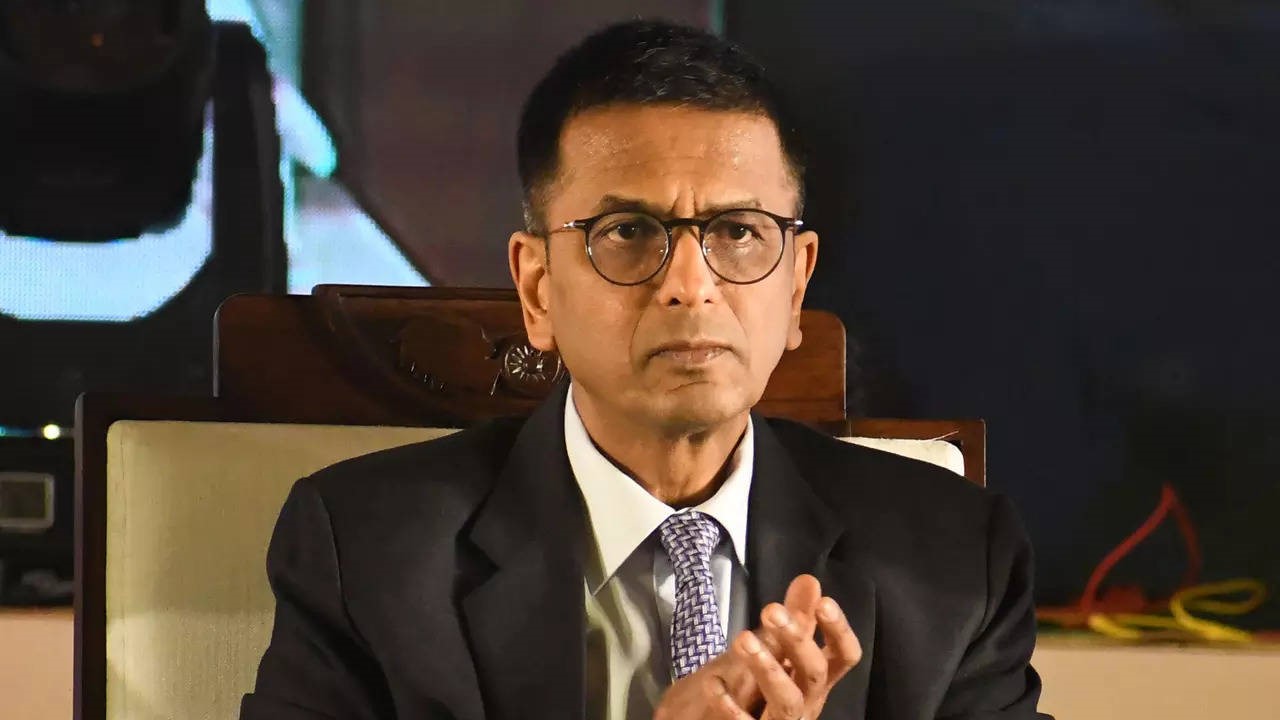Evaluating DY Chandrachud’s Tenure as Chief Justice of India
Syllabus:
GS – 2 – Role of Judiciary , Democracy
Focus:
This article critically examines the tenure of former Chief Justice of India (CJI) DY Chandrachud. It delves into his judicial decisions, reforms introduced during his time in office, and the controversies surrounding his tenure. The discussion highlights the challenges of assessing a CJI’s legacy in a democratic context, where independence, propriety, and judicial impact are subject to intense scrutiny.
Introduction
- DY Chandrachud’s tenure as the 50th Chief Justice of India was marked by both groundbreaking reforms and significant controversies.
- While some hail him as a reformist who modernized judicial functioning, others criticize him for perceived lapses in safeguarding fundamental rights and maintaining judicial propriety.
- This article explores the nuances of his tenure, assessing both accomplishments and criticisms.
The Benchmarks of Judicial Legacy
Historical Context: Lessons from Justice AN Ray
- Justice AN Ray’s tenure (1973–1977) is often considered a low point in Indian judicial history:
- Supersession Controversy: Appointed as CJI after superseding three senior judges following the landmark Kesavananda Bharati
- ADM Jabalpur Judgment: Upheld the suspension of fundamental rights during the Emergency, drawing severe criticism for undermining democracy.
- Comparisons between Justice Ray and Justice Chandrachud are unfair given the vastly different contexts and judicial philosophies.
Assessing Judicial Legacies
- Judicial legacies should not be reduced to a few controversial judgments or instances of executive interaction.
- Key criteria include:
- Judicial independence: Upholding the Constitution without succumbing to political or public pressures.
- Impactful rulings: Landmark judgments that shape legal and social landscapes.
- Institutional reforms: Innovations that improve the efficiency and accessibility of the judiciary.
Key Contributions of DY Chandrachud’s Tenure
Judicial Innovations and Reforms
- Virtual Hearings: Pioneered during the COVID-19 pandemic, ensuring continued judicial functioning.
- Paperless Courts: Introduced measures to digitize court records, reducing delays and improving transparency.
- Live Streaming of Proceedings: Enhanced accessibility to judicial processes, promoting accountability.
Development of Legal Doctrine
- Arbitration and Contracts: Advanced jurisprudence on arbitration, including rulings on unstamped arbitration agreements.
- Reproductive Rights: Recognized reproductive autonomy as a core right for women, enhancing gender justice.
- Disability Rights: Championed inclusivity and equal access for persons with disabilities.
Engagement with Controversial Issues
- Tackled politically sensitive cases like the Gyanvapi mosque dispute and the Maharashtra political crisis.
- While decisions were polarizing, they showcased his willingness to engage with contentious issues.
Criticisms and Controversies
Judicial Independence and Executive Proximity
- Prime Minister’s Visit: The PM’s visit to Justice Chandrachud’s residence during Ganpati Puja raised questions about judicial propriety.
- Perception of Bias: Critics argue that judicial independence can be undermined when boundaries with the executive blur.
Handling of Fundamental Rights Cases
- Pending Bail Applications: Criticism for delays in hearing habeas corpus petitions and bail pleas, such as those of activists Umar Khalid and others.
- Selective Relief: Observers noted discrepancies in the granting of bail, favoring high-profile cases while leaving others languishing.
Contentious Judgments
- Gyanvapi Mosque Case: Allowed a scientific survey of the mosque complex, raising concerns about its impact on communal harmony.
- Electoral Bond Scheme: Declined to establish a Special Investigation Team (SIT) despite concerns of quid pro quo in political funding.
- Ayodhya Verdict Revelation: Public acknowledgment of seeking spiritual guidance for the Ayodhya judgment invited criticism for blending personal faith with constitutional interpretation.
Challenges of Judicial Accountability
Assessing Judicial Success
- Focus on High-Profile Cases: Media and public discourse often overlook broader contributions in favor of politically charged rulings.
- Contrarian Assessments: Judges are celebrated or criticized based on alignment with ideological expectations, undermining nuanced evaluations.
Executive-Judiciary Relations
- Frequent friction between the judiciary and the executive in a democracy is natural but must be carefully managed to preserve institutional balance.
- Propriety and perceived impartiality are critical for maintaining public trust in judicial decisions.
Proposed Reforms in Judicial Evaluation
Holistic Metrics for Assessment
- Judicial legacies should consider:
- Impact on legal development: Contribution to evolving legal principles.
- Access to justice: Reforms that improve accessibility and efficiency.
- Independence and impartiality: Adherence to constitutional principles without yielding to external pressures.
Institutional Safeguards
- Establish mechanisms for transparent case allocation to address concerns about “master of the roster” powers.
- Strengthen oversight to ensure timely adjudication of cases involving individual liberties.
Public Engagement and Awareness
- Promote informed discourse on judicial decisions beyond ideological binaries.
- Educate citizens on the role and limitations of the judiciary in a democratic system.
Balancing Reform and Tradition
- Chandrachud’s emphasis on procedural reforms represents a step forward, but challenges persist.
- Delayed case resolutions, particularly for those involving fundamental rights, erode public confidence.
- Maintaining distance from the executive remains critical to preserving judicial credibility.
- Indian society’s expectations of the judiciary have grown with increasing awareness of rights and governance.
- Balancing institutional propriety, public expectations, and constitutional duties remains the ultimate challenge for future CJIs.
Conclusion
- DY Chandrachud’s tenure reflects both the strengths and challenges of leading India’s judiciary in a polarized and dynamic environment.
- While he introduced significant reforms and engaged with contentious issues, criticisms of selective prioritization and propriety are equally valid.
- A CJI’s legacy should be evaluated through the lens of holistic contributions to judicial independence, procedural innovation, and societal impact, rather than ideological alignments or isolated controversies.
Associated Article
https://universalinstitutions.com/justice-sanjiv-khanna-appointed-as-next-chief-justice-of-india/
Source : Indian Express
Mains UPSC Question GS 2
Assess the legacy of DY Chandrachud as Chief Justice of India. How should the judiciary be evaluated in terms of judicial independence, procedural reforms, and societal expectations?”(250 words).




